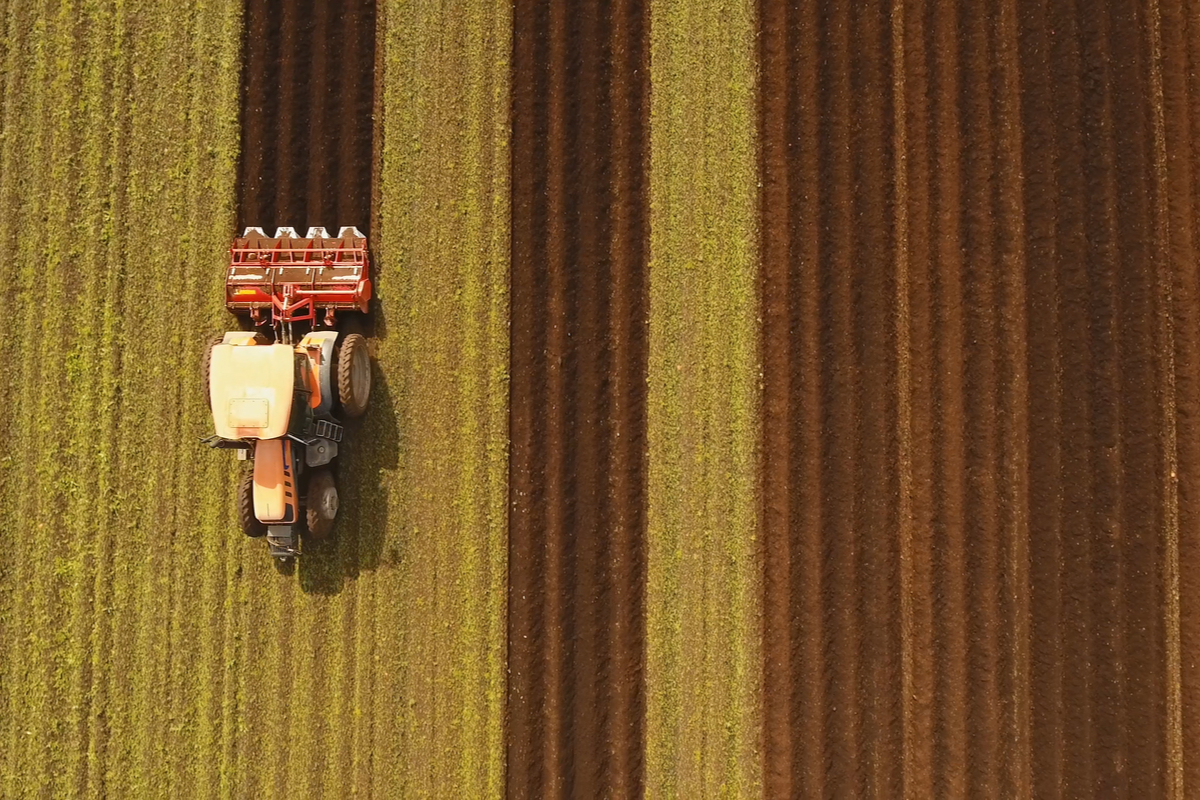It’s Not the End of Agriculture as We Know It
In 1952 the “Father of the Food and Agriculture Organization (FAO)” of the United Nations, the Scottish physician and biologist John Boyd Orr, observed that to provide “sufficient food for all mankind, taking account of the anticipated increase in population, it would be necessary to about double world food production in the next 25 years” and that perhaps as much as “as an increase of 110 percent would be needed,” thus raising the question of “whether the earth can provide sufficient food for the rapidly increasing population.”
As we now know, the world’s population rose from about 2.6 billion individuals in 1952 to about 4.2 billion in 1977 and is now approximately 7.7 billion individuals. During this time period, the available food per person reached a new high and became much more affordable than in the past.
Best known among the numerous advances that made this outcome possible is the “Green Revolution,” a public relations term coined to convey the notion of improving life in less developed economies through the modernization of agriculture rather than a communist uprising. Its most prominent features were new seed varieties, the building of irrigation infrastructure, and the application of synthetic fertilizers and pesticides. As a result of these developments, maximum wheat yields in India rose from 800 pounds per acre in 1963 to 6,000 pounds per acre in 1968. (In a world where no good deed goes unpunished, however, the Green Revolution has long been wrongly disparaged by critics oblivious to the much worse misery and wildlife destruction that would have occurred in its absence.)
Needless to say though, the Green Revolution was part of a continuum of agricultural and other innovations that stretched back further in time. For instance, in his 1904 retirement address the outgoing president of the American Association for the Advancement of Science and one of the best-known social scientists in the world at the time, Carroll D. Wright, argued that the Malthusian and related doctrines had been superseded by scientific and technological advances and theories “more rational and more in line with the facts.”
The law of diminishing returns, he observed, had been overshadowed by countless innovations. Although geographical expansion had been the “immediate means of depriving the doctrine of its force,” it was “intensive agriculture and the discoveries of science,” including steamships, railroads, and telegraphy, that resulted in famines being “avoided or minimized,” “prices [being] equalized,” and the state of the “markets of the world [being] known every day.”
Wright, however, mistakenly suggested that even though Malthusianism might be revived at some future date, it would not be “in our day, nor will it be in our century.” As things turned out though, it would be reborn every generation as policy analysts would fret time and again about all these future mouths to feed. (Nowadays, of course, Malthusianism is mostly invoked in the context of fears of climate change as people are no longer simply considered as mouths to be fed, but have been upgraded to greenhouse gas emitters.)
Despite much opposition to agricultural advances and numerous barriers to trade and innovation, humanity successfully managed to feed and improve the standards of living of a population that nearly tripled since the 1950s by ramping up meat and fossil fuel production and consumption. Remarkably though, public discussions of food production have been taken over by critics who take the advances of the last few decades for granted while indicting the global supply chain for its alleged “significant negative impacts on health and well-being that range from food insecurity to chronic disease, and from environmental degradation to diminished economic opportunity and the erosion of culture.”
To use some of the activists’ more colorful language, our modern-day genetically modified “corn-utopia” is said to be spewing unsustainable volumes of greenhouse gas emissions while delivering junk food, too much meat, rural poverty, migrant-labor exploitation, and agricultural pollution. The critics’ path out of our alleged agricultural wasteland ultimately boils down to consumers paying more and eating less through a wholesale rethinking of the way everything is done from “plough to plate,” including the re-creation of local food systems.
This critical narrative has captured the imagination of educated urban elites on both sides of the Atlantic, including apparently Dr. Stephen Davies as illustrated in his AIER article “The End of Agriculture as We Know It.” The fact that Dr. Davies, a man whose erudition and work on other topics I much admire, has come to support such disputable claims is arguably proof they need to be addressed in some detail.
On the Alleged Destructiveness of Modern Agricultural Practices
Dr. Davies begins his piece by stating that “phenomena such as species loss, habitat destruction, the disappearance of insect and bird life from much of Europe and North America, and even (possibly) declining male fertility can all be blamed on modern intensive farming.” And yet, in his 1948 Road to Survival — the best-selling environmentalist book of all time until the publication of Rachel Carson’s Silent Spring in 1962 — ornithologist and population-control activist William Vogt argued that throughout the world, civilizations at risk of “fire, the ax, the plow, and firearm have … in some of the most fertile and productive regions of the earth … raised the environmental resistance to such a height that the carrying capacity has been brought nearly as low as that of the Gobi or the tundra of Siberia.” “Hundreds of millions of acres of once rich land” had become “as poor as — or worse than — the city gardener’s sterile plot.” Population growth and wealth creation, Vogt argued, had delivered “despoiled forests, erosion, wildlife extermination, overgrazing, and the dropping of water tables.”
Similar claims about the devastating environmental impact of what would now be described as organic and low-impact farming were common between the 1920s and the 1950s. To give but one other example, in 1939 British writers Graham Vernon Jacks and Robert Orr Whyte published a synthesis of this literature titled The Rape of the Earth: A World Survey of Soil Erosion, in which they argued that “as the result solely of human mismanagement, the soils upon which men have attempted to found new civilizations are disappearing, washed away by water and blown away by wind,” and that the “destruction of the earth’s thin living cover is proceeding at a rate and on a scale unparalleled in history, and when that thin cover — the soil — is gone, the fertile regions where it formerly lay will be uninhabitable deserts.”
Far from bringing about the calamity described by Dr. Davies, modern agricultural technologies and long-distance trade have benefitted the environment by concentrating food production in the best locations and by drastically increasing yields. As a result, much marginal agricultural land the world over has been abandoned and has reverted back to forests or grasslands. Indeed, as environmental scientists Jesse Ausubel, Iddo Wernick, and Paul Waggoner have argued, humanity might have already reached “peak farmland,” meaning that productivity gains in agriculture in recent decades have been such that a growing population will be able to meet its needs while using much less agricultural land overall.
While Dr. Davies acknowledges that yields have gone up, he attributes much of this progress to the unsustainable use of “fertilizers, pesticides, and herbicides.” And yet, their use has also peaked in advanced economies and will likely keep declining, especially if politicians stop erecting or maintaining barriers to trade and subsidizing agricultural inputs and the production of biofuels, among other reprehensible things. As the authors of an ongoing series of reports published by the Organisation for Economic Co-operation and Development (OECD) reminded us once again last year, much governmental support for agriculture creates “policy disincentives to increasing productivity, sustainability, and resilience.” Reducing or eliminating production and trade-distorting policies, they argue, “would allow domestic and international markets to function better, discourage overuse of inputs that can damage the environment, and make limited public funds available for more efficient and effective alternative investments.”
In Defense of Livestock
In line with a string of activist reports produced by the United Nations and other organizations, Dr. Davies decries the “ever-larger amounts of land and crops” consumed by “livestock, particularly cattle,” including the idea that “currently nearly half of the world’s grain output is fed to livestock.” As with much else in current agricultural debates, however, the environmental footprint of meat production has been greatly exaggerated and is actually shrinking. Without getting into too much detail, the available evidence suggests that 86 percent of global livestock feed intake is not suitable for human consumption and that grass and leaves represent more than 57 percent of ruminants’ intake. If Dr. Davies is worried about livestock eating what are essentially low-quality crops (either because of bad growing conditions or because they were deliberately grown for them) or crop surplus (in good years), he should turn his attention toward monogastric species (e.g., poultry, pigs) that actually consume 72 percent of the global livestock grain intake. Cattle and other ruminants turn into high-quality proteins many things that humans, pigs, and chickens cannot digest such as the vegetation found on pasturelands, crop residues (e.g., millet and sorghum stovers; rice, oat, and wheat straw; stubble of harvested crops; leaves) and manufacturing and food processing by-products (e.g., leftovers from vegetable oil and other products made from soybeans, sesame, ground nuts, sunflowers, corn, cotton seeds, sugar cane, sugar beets, citrus fruit, yams, potatoes, bananas, peanuts, and almonds). Without ruminants, humanity would struggle with a mighty waste disposal problem. (To be fair, however, pigs and poultry are also great at transforming industrial kitchen and slaughterhouse waste into high-quality protein such as eggs and meat.)
Pigs in the Sky: The Problems of Vertical Farming
Dr. Davies reassures his readers that “a range of new emerging technologies mean that not only will this impending crisis likely never happen but also that our world will be transformed.” Unfortunately, one of his solutions that could result in “an enormous diminution of our species’ impact on the biosphere” is vertical farming, a “technique of growing some kinds of food crops (typically fruits and vegetables) in a liquid nutrient medium in stacked racks in a building.”
The problem is that the concept of vertical farms is probably as old as high-rise buildings and has never worked in practice. Indeed, a recent string of bankruptcies including Alterrus (Vancouver), PodPonics (Atlanta), UF De Schilde (Netherlands), and Plantagon International (Sweden) reminds us once again of their inherent problems and lack of economic viability in the foreseeable future.
To summarize some key issues in no particular order:
-
The cost of most urban inputs and services is typically much higher than in rural areas (land, labor, insurance, taxes, water).
-
The cost of building a huge number of expensive multi-story buildings that can support much greater weight than is typically the norm is prohibitive. Few theorists factor in the practicalities of the weight of growing plants as this requires using either water or water-soaked soil.
-
In addition to the excessive weight of plants and their growth medium, vertical farms must use grow lights year round, as opposed to taking advantage of natural sunlight when it is available. Vertical farms must be heated in the winter, as opposed to temporarily shutting down unprofitable operations, and necessitate much more pumping and lifting equipment than a conventional greenhouse. Thus, the energy and infrastructure operating costs of vertical farms are prohibitive.
-
Because of these higher startup and operating costs, along with the need to create new technologies due to unique production challenges, the food grown in vertical farms must be extremely lucrative for the operation to be profitable. The price premium asked by producers is most often justified in the name of freshness; geographical proximity, little to no use of pesticide, and other alleged sustainability considerations; and the trustworthiness of the producer. Whether there is actually a demand for such expensive food outside of perhaps Manhattan and a few other extremely wealthy enclaves has yet to be proven in light of the recent wave of bankruptcies in the vertical-farming business.
-
Agricultural inputs and outputs from vertical farms cannot be moved using the subway and will therefore cause much additional road congestion in the vicinity of production facilities. Vertical-farming proponents are also seemingly unaware that most manufacturing operations long ago left vertical structures in cities for flatter structures in the suburbs following the advent of electricity and trucking.
-
Because of problems such as sunlight deprivation and lack of wind, vertical farming is only really suitable for growing herbs and leafy greens.
-
Although this should go without saying, vertical farming is especially unsuitable for smelly livestock production. The alternative to trucking in animal feed into the city, with a weight ratio of four-to-one in the case of pigs, dealing with animal waste using municipal infrastructure, and taking live animals to a (now typically rural or suburban) slaughterhouse is to bring in lower volume, refrigerated, and waste-free finished products (e.g., pork chops, chicken cutlets, steaks).
-
Vertical farms and rooftop operations can never be as flexible as large land-based operations in rural areas where additional building construction or modifications can be accomplished much more easily. They might also mandate the nearby construction of additional processing operations if these cannot be incorporated in the original structure. Vertical livestock facilities may run into urban noise bylaw violations and may cause unsupportable olfactory pollution while vegetable farms may imperil the neighboring infrastructure and human life with flooding or electrical fires during any malfunctions.
Final Thoughts
Dr. Davies concludes his essay by writing that “our lives are on the brink of an enormous change, and something that has been a part of human life (and the foundation of society) for several thousand years is about to be changed utterly…. Yet few have noticed this — yet.”
Perhaps, but one suspects future changes will be much more incremental than those sketched out by Dr. Davies if markets are allowed to direct this process. Be that as it may, economic educators should draw more attention to the real problems that make our current agricultural system less sustainable than it would otherwise be, beginning with costly production subsidies and barriers to trade.













